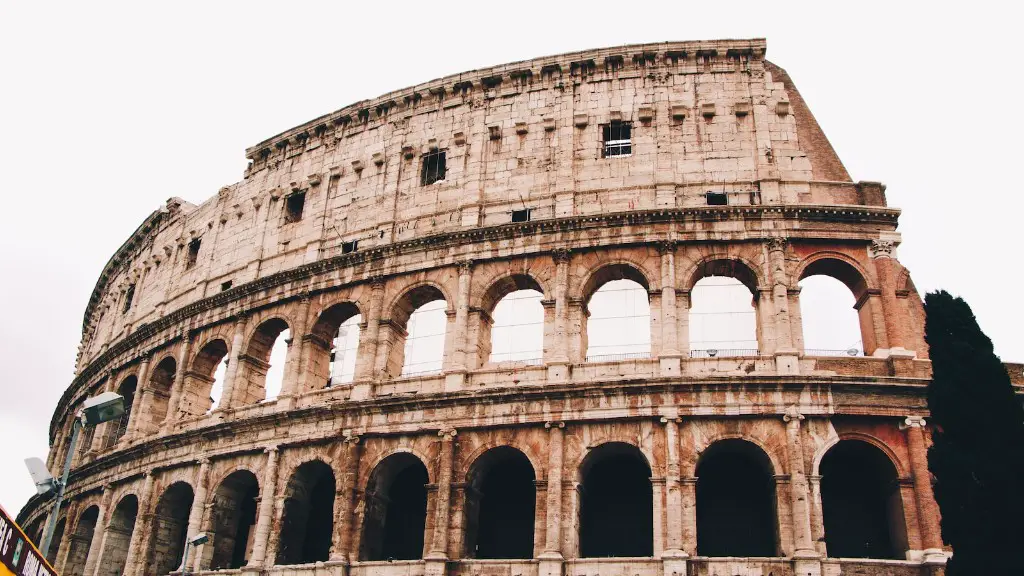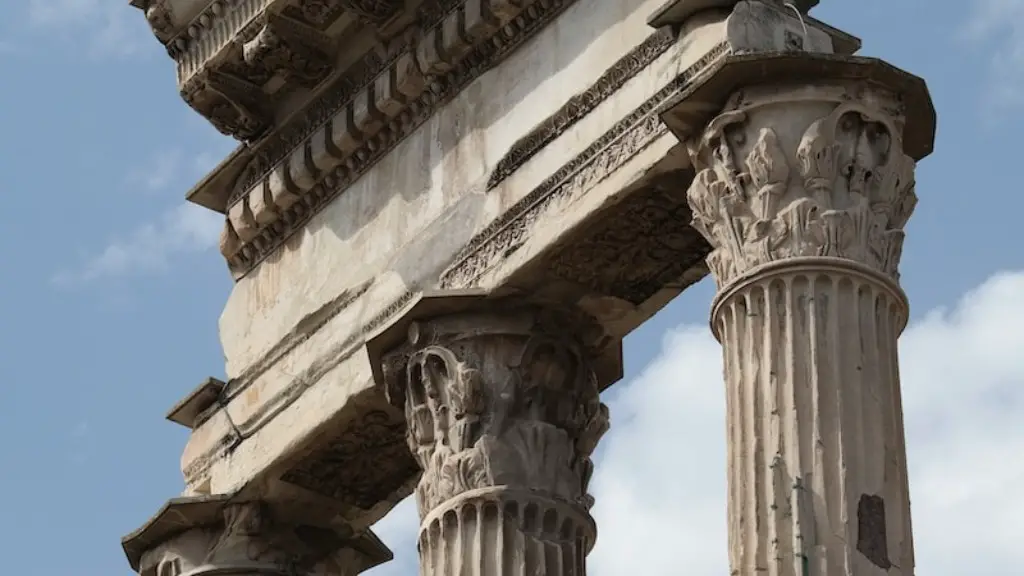Overview of Roman Technology
The Roman Empire was one of the most advanced civilizations to ever exist and it was also one of the longest-lasting. It was so powerful for many reasons, one of which was its unique technology. Ancient Rome had numerous inventions that enabled it to succeed in the long run. In this article, we will be exploring some of the most significant pieces of technology that the Roman Empire was credited for inventing.
Roman Aqueducts
Roman aqueducts were a crucial part of the Roman Empire. Aqueducts were used to transport water from one area to another, usually across rivers, canals, and valleys. Aqueducts were also used to provide water to cities, villages, and even towns. Aqueducts were the most impressive way of providing water to the population. They were built with extraordinary skill and engineering, keeping the height and direction of the flow of water constant, ensuring that it reached its destination in the right quantity.
Roman Roads
Roman roads were another of the primary technological advances of the Roman Empire. Roman roads were impressive for their time because many of them are still in use today. They were constructed with skill and engineering in mind and many of them are still well preserved. The layout of these roads was intricate and impressive – they were built with an astoundingly straight line, with a slightly raised centre to increase the flow of water and reduce the effects of wear and tear.
Roman Arches
Roman arches were a well-known form of architecture during the time of the Roman Empire. Arches were used for many different purposes such as support in building bridges, aqueducts, temples, and more. They were incredibly valuable due to their extremely strong supportive structures – they were able to carry heavy loads while being both practical and aesthetically pleasing.
Roman Sewers
One of the most important pieces of Roman technology was their sewer system. This sewage system was built with a focus on hygiene and sanitation. The sewers were built underground, with some of them built in part of the public baths. They were designed to ensure that dirty water and waste were kept away from living quarters and would be washed away with clean water.
Roman Concrete
The invention of Roman concrete was revolutionary for its time and is still used today. It was invented as a way to improve upon the traditional mortar and stone construction methods, which were not as practical or as durable as Roman concrete. This concrete, comprised of sand, lime, water, and volcanic ash, was incredibly strong and durable and is credited for helping the Roman Empire build their extensive structures and monuments.
Roman Irrigation Systems
The invention of the Roman irrigation system was yet another technological advancement made during the Roman Empire. This system was a crucial part of the Roman’s agricultural strategy – it was used to irrigate large areas of land, resulting in more efficient and plentiful harvests. Irrigation systems were also able to produce better-quality crops and facilitate better yields.
Roman Aqueducts: Architecture and Design
Aqueducts were a crucial part of the Roman Empire, not just in terms of providing water supply, but also in terms of architecture and design. The construction of aqueducts was an incredibly intricate and sophisticated process. They were built with an eye for detail, incorporating an intricate design and triangular archways. The aqueducts were also built with a focus on precision and accuracy, ensuring that the water supply was consistent and fast-flowing.
Roman Architecture: Essential Technologies
Roman architecture was made up of a number of essential technologies. One of the most important pieces of technology used in Roman architecture was concrete. This type of concrete was made from a combination of sand, lime, water, and volcanic ash, making it incredibly durable and strong. This type of concrete was not just used in building structures, but also in sculpting intricate objects and sculptures.
Roman Technology: Advanced Engineering Practices
The Roman Empire was well known for its advanced engineering practices. Engineering and construction during the time of the Roman Empire was of an incredibly high standard, with an emphasis placed on precision and accuracy. Roman engineers were also able to engineer some of the most complex structures, such as aqueducts, which are still stood today.
Roman Technology and its Influence Today
Roman technology has had a lasting influence throughout the centuries and can still be seen in modern society. Many of the pieces of engineering and architecture constructed during the time of the Roman Empire are still standing today and are still admired for their quality and craftsmanship. This legacy has ensured that the Roman Empire remains one of the most impressive and advanced civilizations to ever exist.
The Spiritual Meaning of Roman Technology
The concept of technology had a spiritual significance to the Romans. The Romans viewed many of the grand structures they built as a way to express their faith and devotion to their gods. This is why the architects and engineers of the Roman Empire put so much effort into building their structures accurately and precisely – they wanted them to be perfect representations of their spirituality.
Roman Construction Techniques: Longevity and Power
It is easy to see why the Roman Empire was so successful and powerful when looking at their construction techniques. Many of their engineering and construction techniques are still used today and are just as effective now as they were then. The Romans also understood the importance of precision and accuracy, which is why their construction projects were so successful and long-lasting.
Roman Plumbing and Irrigation Systems: A Domino Effect on Quality of Life
The invention of Roman plumbing and irrigation systems had a domino effect on the quality of life within the empire. The plumbing system ensured that the empire was kept clean, while the irrigation systems allowed farmers to irrigate their fields more efficiently and produce larger and better-quality crops. Both of these inventions allowed for the Roman Empire to increase its production and wealth, which ultimately led to higher living standards for the citizens.
Modern Takeaways from Roman Technology
Modern society can learn a lot from the technology used by the Romans. For example, the Romans were able to build some of the most impressive and durable structures in the world, and they were able to do so while focusing on precision and accuracy. We can also learn from their plumbing and irrigation systems, which were incredibly effective and efficient. Finally, we can take away the spiritual meaning behind their structures, which was a driving of force behind their engineering process.



